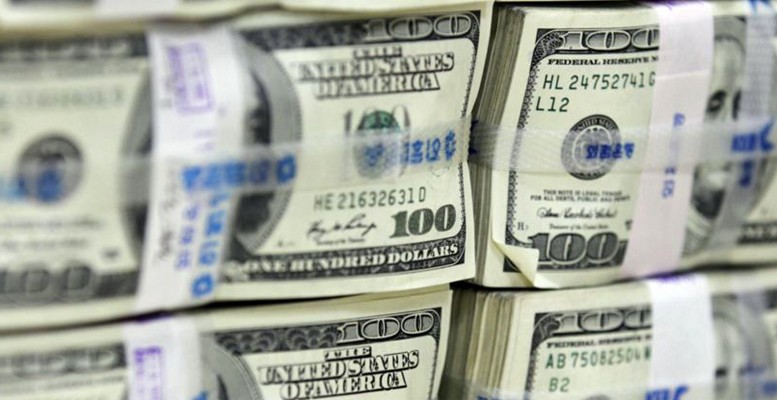Benjamin Cole via Historinhas | Stanford luminary and economist John Cochrane is touting the fiscal theory of the price level (FTPL), in which the anticipated future of federal budget primary (operating) deficits is the key tell in present-day inflation. If the national budget looks re-inky, then inflation will result.
Cochrane contends FTPL is why the Fed’s QE program has been met with an inflationary yawn. The federal budget deficit outlook is unaffected by QE.
Set aside modern-day empirical observations to the contrary (isn’t the federal budget operating deficit slated to widen?), and let’s run with Cochrane—but also with a June, 2014 paper from the freshwater (okay, dry-gulch) Dallas Fed, “Inflation Is Not Always and Everywhere a Monetary Phenomenon” by Antonella Tutino and Carlos E.J.M. Zarazaga.
Though of dual peninsular heritage, Tutino and Zarazaga are devout FTPL’ers who cite the Teutonic success in bashing Weimar Republic hyperinflation through FTPL tactics—but those tactics included the central-bank buying of real estate assets, which looks really close to quantitative easing. The Rentenbank stifled inflation by backing currency with rents from property.
The authors aver:
“The fiscal theory of the price level argues that what’s true about hyperinflation is valid more generally: Fiscal policy can prevent inflation from rising or falling too much by backing all outstanding nominal government liabilities—interest bearing or not—with a stable level of expected future primary government surpluses.
By formally incorporating fiscal policy in the analysis of price-level dynamics, the fiscal theory of the price level is better equipped than the conventional monetarist approach to explain why the recent large expansion of the money supply in the U.S. has not caused higher inflation. The (FTPL) theory implies that the quantitative easing programs, which created money to purchase mortgage-backed securities from the public, preserved price stability because that money is backed by the returns from real estate investments. Similarly, Germany restored price stability after its interwar hyperinflation with its real-estate-backed currency.”
So when the Fed bought more than $1 trillion in mortgage-backed securities, that boosted bond- and dollar-holder confidence in the U.S. dollar.
By this version of FTPL, it appears that some monetizing of government debt (central bank purchases of Treasuries), counter-intuitively, is also anti-inflationary. The government is less indebted, more able to meet obligations.
Indeed the authors say, “Likewise, any money created to purchase government debt from the public at market prices is backed by the same primary surpluses that the public already expected would service that debt. As long as the expected primary surpluses backing existing government liabilities haven’t changed, there is no reason for the price level to change either.”
Conclusion
Like many observers, I may remain skeptical about FTPL. I suspect QE did not lead to inflation, or even to much more aggregate demand, as banks are not going to lend except to credible risks, no matter how large their reserves (IOER did not help).
My view is the QE stimulus stems from printing (digitizing) money and giving it to bondholders, who then must spend the new money, or place the digitized cash into bank accounts, or into securities or property (or convert into paper cash, which also happened). QE worked, it just should have been earlier, larger and more-sustained. The world is so swamped with over-capacity in everything that QE did not lead to inflation for obvious and old-fashioned supply and demand reasons. People selling automobiles don’t know that future federal deficits mean they should raise their prices. They only know there is chronic global over-capacity in the auto trade. Ditto oil, in spades.
Suppose global manufacturing platforms and incredible innovations in production (some not really measured) are a continuous series of positive supply shocks?
Still, the Dallas Fedsters offer an interesting avenue to explore. Should the Federal Reserve target further reductions of federal debt through QE, or the buying of more real-estate backed assets?
Should not QE be utilized to develop to structural improvement in federal revenues and cutting of taxes? What if the Fed bought enough global real estate assets that the stream of rents could negate the need for any federal borrowing?
Or, is such a concept the equivalent of macroeconomic pornography, that which we would do if we were not shamed out of it?
PS Dallas Fed authors and FTPL’ers Tutino and Zarazaga also posit that capital gains taxes undercut inflation continuously, as even capital gains induced solely by inflation result in increased federal revenues. The public knows that if inflation budges up, tax collections rise even more quickly. By extension, the progressive tax code further cements market sentiments that the federal government is or is moving towards primary surpluses. I suspect John Cochrane will find this aspect of FTPL theory less noteworthy.
PPS The developed world is 30 years into declining inflation and interest rates, and now into slow growth and deflation in Europe and Japan. Yet we have an entire generation of (now senior) economists and central bankers still framing every discussion in terms of inflation. Using monetary or fiscal policy to spur economic growth? Not a topic, so much.
Consider this preface to a recent conference at the University of Chicago:
“Macroeconomic policy—monetary and fiscal—has two primary goals to achieve: determining the aggregate price level and stabilizing government debt.”
*Image: Archive





